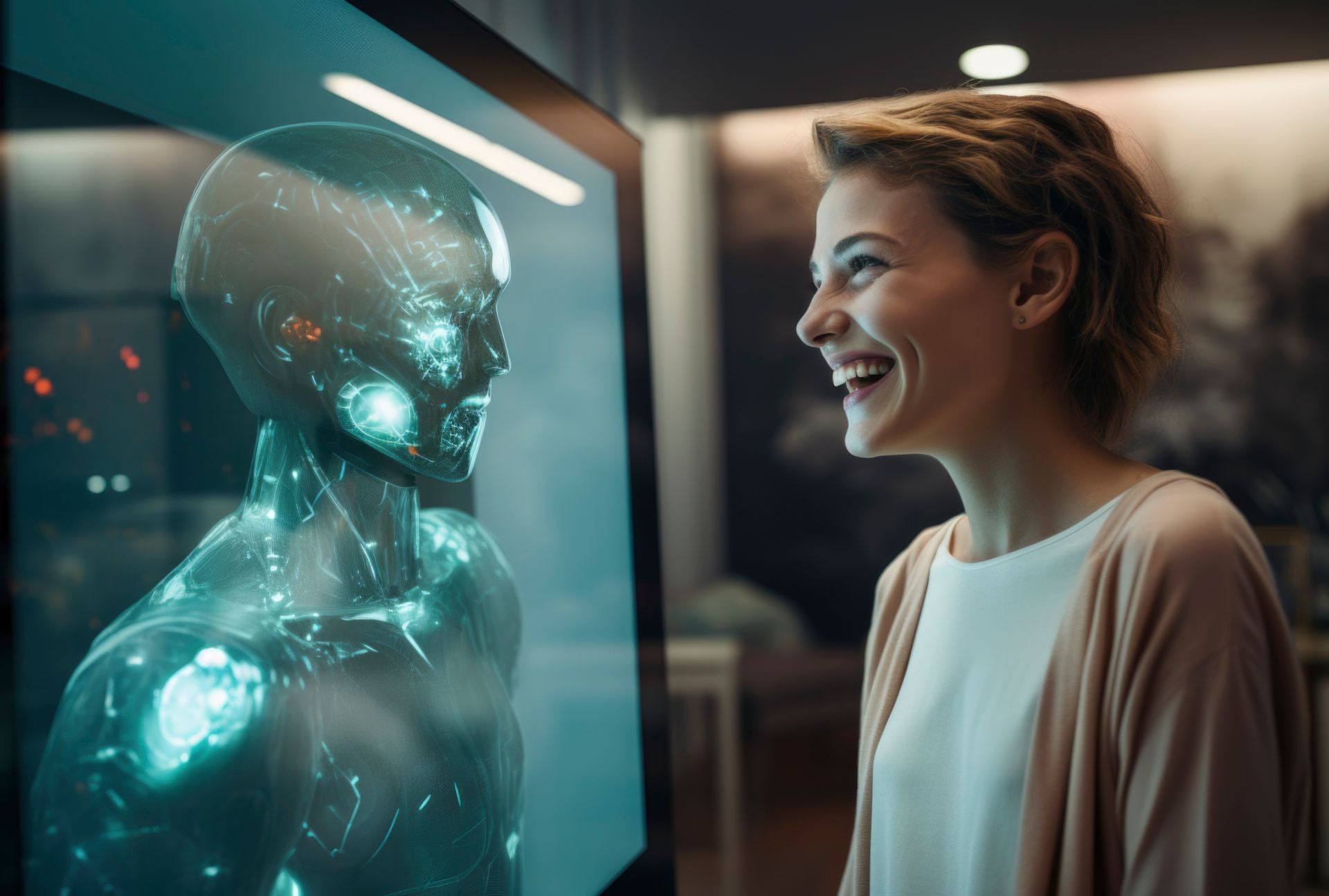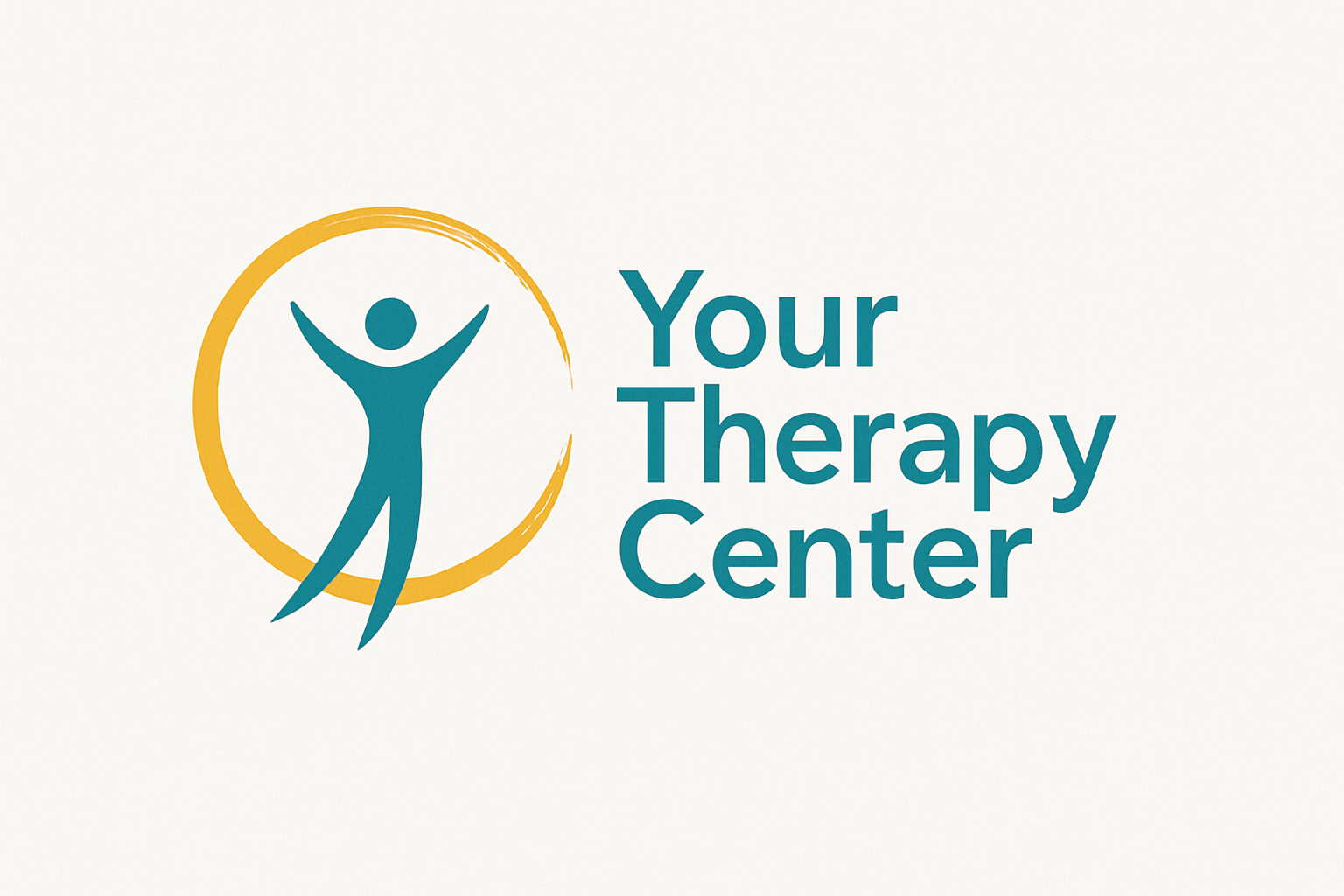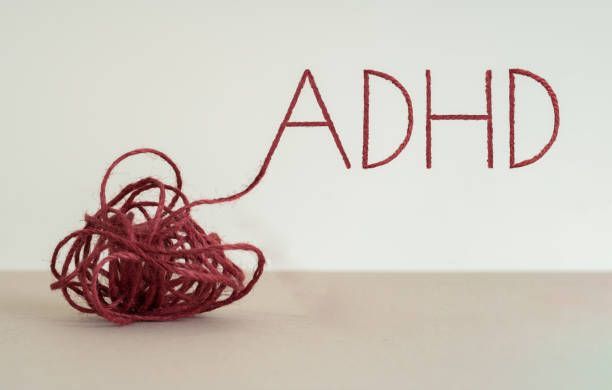Latest Articles
Feel free to check out some of our articles

As artificial intelligence continues to evolve, many people wonder whether AI could one day replace the human therapist. After all, chatbots can already provide instant replies, track moods, and offer personalized affirmations. Yet while these tools may seem promising, the core of therapy — human connection — remains irreplaceable. The Rise of AI in Mental Health In recent years, we’ve seen a growing number of AI-driven mental health apps and virtual assistants. They can help users manage anxiety, remember coping strategies, or even simulate a conversation. For people who struggle to access therapy, these tools can offer a sense of immediacy and accessibility. However, AI lacks one fundamental ingredient — empathy. It can process language but cannot truly feel or understand the emotional nuances of a human being. Therapy isn’t just about words; it’s about tone, presence, and attunement — the invisible human bond that allows healing to unfold. Why Human Connection Matters in Therapy Every therapeutic process is built on trust and attuned communication. A skilled therapist listens beyond what is said — noticing subtle cues in body language, silence, or emotional shifts. This attunement fosters safety, and within safety, real transformation occurs. AI can offer insights, but it cannot provide the warmth of eye contact, the comfort of silence, or the validation that comes from being truly seen and heard. Even the best-designed algorithms cannot replicate this relational depth, which research consistently shows to be the strongest predictor of successful therapy outcomes. Where AI Can Support Therapy That said, AI can be a valuable adjunct tool. It can: Remind clients to complete CBT exercises or mindfulness practices Track mood fluctuations between sessions Provide psychoeducational content Offer journaling prompts or motivational messages When integrated responsibly, AI can enhance therapy, not replace it. It may make therapy more structured, data-informed, and accessible — but only when guided by a human professional who interprets and personalizes the experience. The Future: A Collaboration, Not a Competition Rather than viewing AI as a threat, we can see it as a partner in care. The future of psychotherapy may blend human insight with digital precision. A well-trained therapist could use AI tools to monitor progress or analyze behavioral trends, freeing more time for the deep, relational work that only humans can do. Ultimately, healing happens in connection — the meeting of two minds, two nervous systems, two stories. AI can simulate conversation, but it cannot co-regulate emotion or share genuine empathy. Therapy will continue to be a profoundly human art, supported — not replaced — by technology.

Every autistic individual's journey is entirely their own—no two experiences mirror each other perfectly. The spectrum of autism is vast and beautifully diverse, encompassing those who have formal diagnoses, those exploring their neurodivergent identity, and those who have long sensed they navigate the world differently without quite understanding why. My work draws from both lived experience and professional expertise, yet I recognize that understanding your specific relationship with autism requires collaboration. Your insights about your own experiences are invaluable. Together, we can examine how autism shapes your daily reality—past and present—and identify the support structures that will help you thrive authentically in your environment. The Impact of Living in a Neurotypical World Research increasingly demonstrates that autistic individuals often experience significant trauma from navigating predominantly neurotypical spaces. The constant demand to mask, adapt, or explain oneself in environments that weren't designed with neurodivergent needs in mind creates cumulative stress. I offer support for trauma-related symptoms stemming from: - Chronic invalidation and misunderstanding - Educational system trauma - Social rejection and exclusion - Sensory overwhelm in everyday environments - The exhaustion of prolonged masking Co-occurring Experiences Autism frequently intersects with other experiences that deserve attention and understanding: Mental health challenges including anxiety and depression often emerge from years of navigating mismatched environments and expectations. Post-traumatic stress can develop from repeated invalidating experiences, particularly in school or workplace settings. Sensory processing differences affect how you experience your environment—sounds, textures, lights, and spaces may feel overwhelming or conversely, you might seek specific sensory input. Understanding your unique sensory profile is essential. Interoception and alexithymia influence how you perceive internal bodily signals and identify emotions. Many autistic people find these aspects challenging, which can affect everything from recognizing hunger to processing feelings. Executive functioning variations may influence attention, planning, organization, and memory. Sleep patterns often differ from neurotypical norms. Eating and food relationship s can be complex, influenced by sensory sensitivities, routine preferences, and other factors. We'll explore whether these resonate with your experience and whether they cause you distress—or if concerns primarily come from others' perceptions. Intersectionality and Identity Your identity is multifaceted. Being autistic intersects with your culture, gender, sexuality, ethnicity, class, and other aspects of who you are. These intersections create unique experiences and challenges that deserve acknowledgment and exploration. Understanding how different parts of your identity interact helps build a more complete picture of your needs and strengths. Navigating Adolescence and Self-Discovery Puberty and adolescence bring intensified challenges, particularly for autistic young people. This developmental period often heightens self-awareness and amplifies feelings of difference at precisely the moment when fitting in feels most important. During this transitional time, we can work together using various approaches—including visual tools, creative media, and conversation—to: - Explore emerging emotions and their physical manifestations - Understand changing social dynamics - Develop self-advocacy skills - Build sustainable coping strategies that work beyond our sessions - Support family members in understanding your needs The goal is empowering you with tools and understanding that extend far beyond our time together, helping you build a life that honors who you are.

We live in a time where artificial intelligence is reshaping the way we work, connect, and even care for ourselves. Algorithms suggest what we should read, eat, and watch; virtual assistants schedule our days; and AI-driven apps promise to boost our focus or emotional wellbeing. While technology can make life more efficient, it also invites a deeper question: How can we stay human in a digital world that never slows down? The Paradox of Connection In theory, we’ve never been more connected — yet so many people report feeling anxious, distracted, or lonely. Notifications, messages, and screens compete for our attention every few seconds. Our minds are constantly processing information but rarely resting in the present moment. This is where mindfulness becomes not a luxury, but a necessity. Mindfulness is the art of awareness — noticing what is happening right now, without judgment. It reminds us that behind every digital interaction, there is still a living, breathing human being. It helps us pause, breathe, and reconnect with what matters most: presence, compassion, and meaning. How AI Challenges and Supports Mindfulness Artificial intelligence can easily amplify our distractions. Recommendation algorithms are designed to keep us scrolling; chatbots can simulate empathy without real connection. If we are not intentional, we may end up outsourcing not only our tasks but our inner life — our thoughts, emotions, and decision-making. Yet, AI can also support mindfulness, if we use it consciously: Meditation apps can help establish daily routines. Journaling tools can encourage self-reflection. AI reminders can prompt us to take breaks or breathe. The key lies in how we use technology, not whether we use it. Mindfulness invites us to create space — to interact with technology rather than react to it. Practical Ways to Stay Grounded Single-task instead of multitasking. Focus on one thing fully — a conversation, a walk, a meal. Schedule digital breaks. Silence notifications for 30 minutes a day and notice your body’s response. Use technology intentionally. Ask yourself: Is this helping me feel connected or more distracted? Practice mindful breathing before and after screen time. By turning small daily moments into opportunities for awareness, we reclaim our attention — our most valuable human resource. Rediscovering Our Humanity AI will continue to evolve, but the essence of mindfulness — awareness, compassion, and presence — will always remain uniquely human. No algorithm can truly replicate the depth of being seen, the warmth of empathy, or the quiet wisdom of silence. When we bring mindfulness into our relationship with technology, we don’t reject progress — we humanize it. We remind ourselves that even in a digital world, we are not machines — we are beings capable of feeling, connecting, and choosing with intention.

In today’s fast-moving world, therapy is not one-size-fits-all. Human experience is layered, emotional, and complex — and so are the methods that support healing. Three of the most powerful, evidence-based approaches in modern psychotherapy — Cognitive-Behavioral Therapy (CBT), Schema Therapy, and Mindfulness-based interventions — can work together in ways that deeply transform how clients understand and change their inner world. 🧩 1. CBT — Building Awareness and Change Cognitive-Behavioral Therapy (CBT) remains one of the most extensively researched and effective methods for anxiety, depression, OCD, and stress-related disorders. It focuses on the here and now: identifying unhelpful thinking patterns and behaviors, challenging them with evidence, and replacing them with more balanced alternatives. In practice, CBT provides clients with concrete skills — thought records, behavioral experiments, and exposure techniques — that foster measurable progress. Its structured nature helps clients regain a sense of control and self-efficacy: “I can influence how I feel by changing how I think and act.” 🧱 2. Schema Therapy — Healing the Deeper Patterns Some difficulties run deeper than daily stress or surface-level thoughts. Schema Therapy, developed by Jeffrey Young, expands upon CBT by addressing early maladaptive schemas — long-standing emotional patterns rooted in childhood experiences. These schemas influence how we perceive ourselves, others, and relationships (e.g., “I’m not good enough,” “People always leave,” “I must be perfect to be loved”). Through imagery rescripting, limited re-parenting, and mode work, Schema Therapy offers a way to heal the emotional child within while developing healthier adult modes. It’s especially effective for chronic depression, relationship struggles, and personality-related difficulties. By integrating Schema Therapy, the therapist moves from “fixing thoughts” to reconnecting with unmet needs — empathy, safety, belonging, and love. 🌿 3. Mindfulness — Cultivating Awareness and Acceptance Mindfulness, now a cornerstone of many evidence-based therapies, invites clients to observe thoughts and emotions without judgment. Rather than trying to control or avoid inner experiences, mindfulness teaches us to relate to them differently — with curiosity, compassion, and calm awareness. Research on Mindfulness-Based Cognitive Therapy (MBCT) and Mindfulness-Based Stress Reduction (MBSR) shows strong evidence for reducing anxiety, depression relapse, and emotional dysregulation. Clients often describe it as learning “to step back from the storm” — to notice what arises, breathe, and respond with intention rather than reaction. ⚖️ 4. Why Integration Matters Each of these approaches offers something unique: CBT provides clarity and structure. Schema Therapy brings emotional depth and long-term transformation. Mindfulness cultivates self-awareness and presence. When integrated thoughtfully, they address cognition, emotion, and awareness — the three pillars of sustainable psychological change. For instance: A CBT tool (thought record) can help identify cognitive distortions. A schema-based reflection can explore where that belief came from and what need it protects. A mindfulness exercise can help the client sit with the underlying emotion safely and compassionately. This triadic integration enables clients not only to manage symptoms but to understand and re-shape their inner experience on every level. 🪶 5. How Sessions Might Look A typical integrative session might include: Grounding or mindful breathing (2–3 minutes) to center awareness. Review of patterns or situations that triggered distress since the last session. CBT analysis — exploring automatic thoughts, evidence, and alternative perspectives. Schema exploration — identifying emotional themes or unmet needs beneath the thought. Mindfulness-based closure — returning to the body, reflecting on insight gained, and strengthening self-compassion. Clients leave with practical tools — journaling, mindfulness exercises, or behavioral tasks — that extend therapy beyond the room. 📚 6. Evidence Snapshot Recent studies (Hofmann et al., 2012; Young et al., 2019; Kuyken et al., 2020) highlight the synergy between these methods: CBT shows efficacy across anxiety, depression, and insomnia. Schema Therapy yields strong results for chronic and personality-related issues. Mindfulness-based therapies significantly reduce relapse risk and enhance emotional regulation. Combining them offers both short-term symptom relief and long-term transformation. 💬 7. The Heart of Integrative Practice At the core of this integrative work is empathy — the ability to hold space for both cognitive insight and emotional truth. The goal is not to “fix” clients, but to help them reconnect with parts of themselves they’ve learned to silence or ignore. Therapy becomes a journey of awareness, compassion, and personal growth — supported by science, yet deeply human in its essence.





